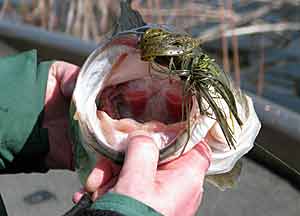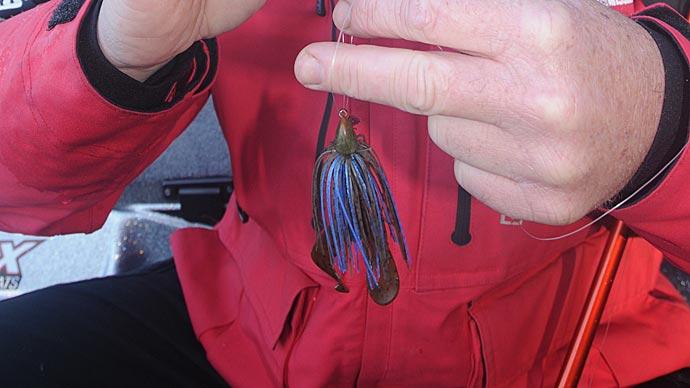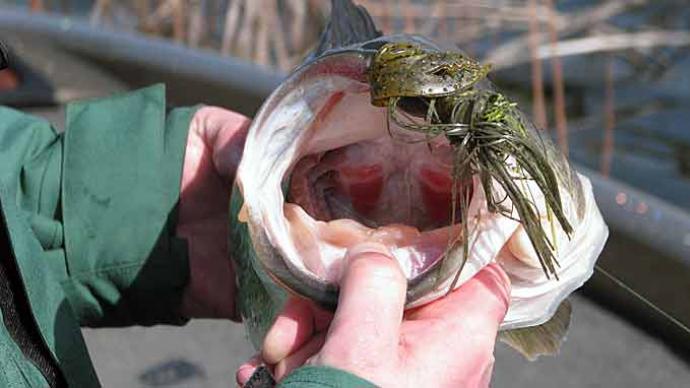
When the water is still cold during the early months of the season, bass can be about as picky as a spoiled high school kid. It seems that no matter what you do, the little jerks are never satisfied. You spend all of your hard-earned money to give them everything you think they want, but you get no love in return. The lack of attention can often make it difficult even to locate bass.
Begin searching for areas on the deeper edge of the first drop-off from the shoreline. For example, if the water drops off to fifteen feet deep, twenty feet from the bank, that is where I would begin my search. Try to find slight differences to which the fish can relate. Whether it is a log, boulder, or a depression in the lake bottom, it does not matter as long as it is different from the surroundings. When you find these areas, be sure to mark them on your GPS. If you do not own a GPS, use landmarks on the shorelines as references to locate your area again.
After you have located areas that meet the criteria you are searching for, you need to determine the ideal jig combination for each area. The jig needs to descend vertically into the strike zone slowly. A small jig will work if the area is free from cover, such as trees and other items that need to be penetrated. Using jigs as small as 1/16th of an ounce can be deadly during the cold months. If you need more weight, feel free to step it up to 1/8- or ¼-ounce.
For the jig to fall at the correct speed, you must match it with the right trailer. I prefer plastic crawdads from Gary Yamamoto Custom Baits and plastic jig chunks shaped like the old pork trailers. You can add a bigger trailer when you need to get the jig to fall slower. There may be a situation that calls for a ¼-ounce jig to get down to the target. However, the fall rate is a little too fast when you use a Fat Baby Craw as a trailer. Remove the Fat Baby Craw and add the new Medium Yamamoto Craw to combat the problem. The increased bulk of plastic behind the jig will cause the bait to fall a little slower. This also holds when using Chunk trailers.
Once you find the correct combination of jig and trailer, position the boat far enough off of the drop-off to allow you to cast far enough to cover the whole strike zone. Cast your bait onto the shallow side of the drop-off. After the jig hits bottom, slowly drag and hop the lure towards the target. When you feel the jig drop off the edge, allow some slack in your line so that the jig will fall vertically. The jig will fall towards you if you do not provide some slack. Once the bait hits bottom, be sure to allow the bait to sit still for extended periods (up to 15-20 seconds is not uncommon). It is not abnormal for bass to hit the bait once it starts moving after a long pause.
Mentally remind yourself to work the entire area thoroughly. The bass often refuse to hit a bait during this time of year unless it is right in their face. If the bite is extremely tough, do not be afraid to flip the script and position your boat, so you are casting towards the deep side and working the jig up the ledge as well. Additionally, if you pull a fish from one of these targets, do not automatically move on to the next area. If the targets are big enough (e.g., a tree or large boulder), they may hold more than one fish. Be very methodical when dissecting each area. Your persistence will pay off in the long run.
Jig fishing will not be the technique that produces vast numbers of fish on most outings. What they are widely known for is producing quality fish. The reduced number of bites is often a deterrent for anglers new to jig fishing. They find it tough to build confidence in the bait or technique because they are not catching tons of fish. Just remember, in a tournament, you can only keep five bass. You might as well catch five good ones, and jig fishing is the way to do it.




